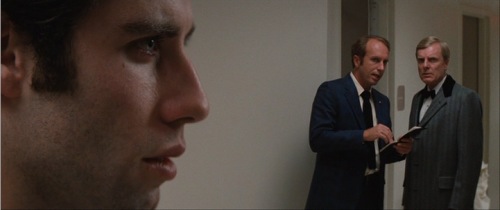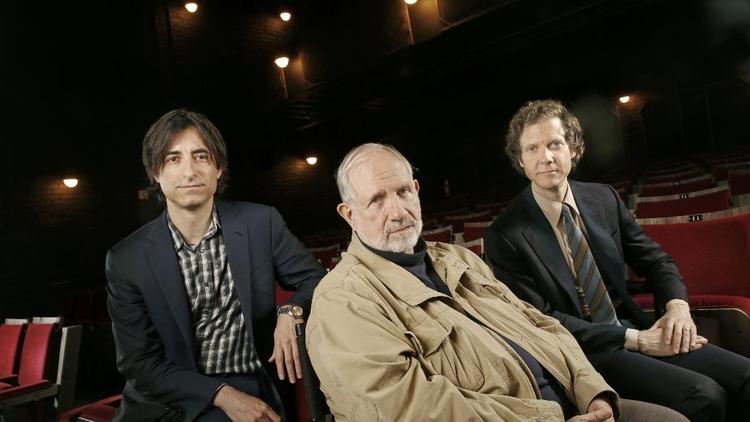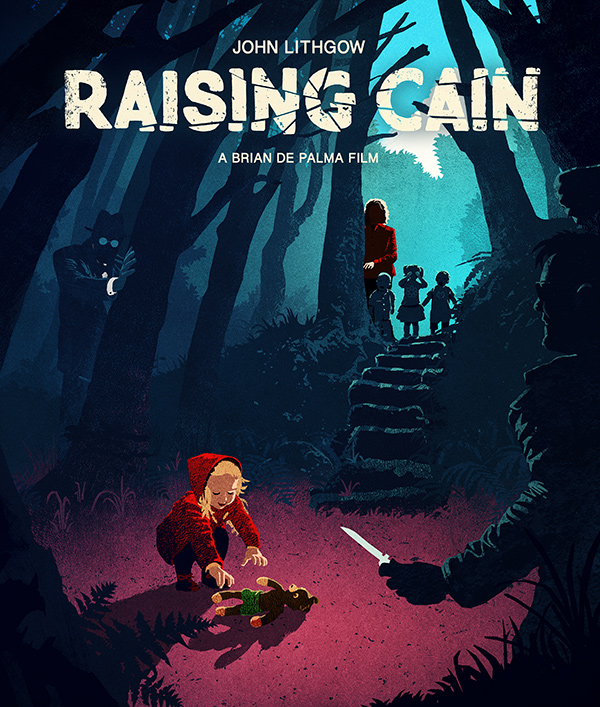BILL FENTUM REPORTS FROM THIS PAST FRIDAY NIGHT'S SCREENING IN DALLAS
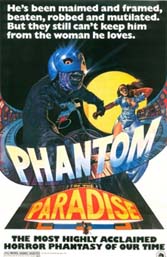 Our old friend Bill Fentum was at The Majestic Theatre in Dallas this past Friday night (June 17), where Brian De Palma's Phantom Of The Paradise screened as part of this year's Oak Cliff Film Festival, with one of the film's stars, Jessica Harper, in attendance. The screening was a homecoming for Phantom, as parts of it were filmed at The Majestic, but it had never played there until last week. Here is Fentum's report, followed by a short YouTube video from Harper's Q&A, and then a link to a separate interview with Harper prior to the screening:
Our old friend Bill Fentum was at The Majestic Theatre in Dallas this past Friday night (June 17), where Brian De Palma's Phantom Of The Paradise screened as part of this year's Oak Cliff Film Festival, with one of the film's stars, Jessica Harper, in attendance. The screening was a homecoming for Phantom, as parts of it were filmed at The Majestic, but it had never played there until last week. Here is Fentum's report, followed by a short YouTube video from Harper's Q&A, and then a link to a separate interview with Harper prior to the screening:Jessica Harper remarked on how strange it felt to return to the place where much of Phantom was filmed, and the fun of watching the movie with so many fans in attendance, applauding for each song as well as the cast and De Palma in the end credits. The crowd included a guy from Memphis dressed as the Phantom with mask/helmet and cape [see YouTube video below], and several people who had traveled from Winnipeg for the occasion. They clearly enjoyed taking photos around the building (much of it looking the same today, despite renovations through the years), and Harper was invited during the Q&A to come to a Phantom screening event in Winnipeg this October 28, with the Juicy Fruits/Beach Bums/Undead trio—Archie Hahn, Jeffrey Comanor and Peter Elbling (Harold Oblong)—all scheduled to be there.Asked to share memories of the production, she talked about the energy that people like Hahn, Comanor, Elbling and George Memmoli brought to the set each day. Most touching, she talked the gentle support she received from William Finley throughout the shoot, making her debut film much easier than it might have been. She laughed about her "chicken dance" at the end of the "Special to Me" number ("my personal contribution to the choreography"), and recalled some conflict with costume designer Rosanna Norton, who didn't always welcome accessories Harper would add to her wardrobe, like the fedora she throws onto the stage in her "Special to Me" audition.
A couple of other memories: Steven Spielberg visiting the set in New York after the crew left Dallas, and besides Linda Ronstadt, her competition for the role of Phoenix including a then active singer named Lynn Carey, daughter of actor Macdonald Carey. Finally, asked about being directed by De Palma and other auteurs in her career (e.g., Dario Argento on Suspiria, Spielberg on Minority Report and Woody Allen on Love and Death and Stardust Memories), she noted that it always leads to a better experience than films where the director lacks a strong personal connection to the material, and isn't sure of what he wants.
Zach Gayne at Screen Anarchy interviews Jessica Harper
Everybody has their own favorite song. I think a lot of people like "Old Souls," and not that I don't, but "Special to Me" is one of my favorite song-scenes in the film. I love the choreography of the dance. There's something just so enchanting about the whole thing. Do you remember how that came to be? The process of choreographing and all of that?I kind of made it up.
Really?
Oh, yeah. There was that kind of configuration of the stage where the piece of stage going out into the audience, a strip of stage so I had to move. I had to get from A to B to C and back again so I had to figure out something, some kind of thing I could do that would get me where I needed to go doing some kind of dancey thing that would accommodate the necessity. The famous chicken dance.
I think I just came up with it and I just started messing around on stage and made it work. I had this fedora. I think the costume designer really wanted to kill me because I kept saying, "I think I should wear this," or "I think I should wear this." I really misbehaved with the costume designer including, I brought this fedora in. It was something I wore in real life. I went around with this little fedora at that time. I thought, “This will be a great prop. I'm going to take this hat and I'm going to throw it out.” I like to take credit for that scene in terms of the choreography and the hat.
Well, it's very good work.
Thank you.
I just love it. Even the moments of calm, I guess the chorus, where you're just sort of staring into the camera, it's so hypnotizing. Do you have a favorite song or a favorite scene?
I love that scene. I also love "Old Souls" too. I think it's a beautiful song.
Indeed! (Guillermo del Toro and his wife danced to it at their wedding.)
I was so lucky I got to sing these gorgeous songs, but that was called for, of course. I really liked "Old Soul" and "Special to Me."
Do you recall one scene as being really fun to shoot?
"The freak who killed Beef is up on the roof.” I just remember finding that really hard to say. The freak who killed Beef is up on the roof.
That is a bit of a tongue twister.
That's something you can say three times fast.... Doing "Special to Me" could not have been more fun. Oh! You know what was fun - except it was really hair-raising? The first day of shooting we did all that stuff that was at the beginning where I come in and audition and there's this scene that's kind of hilarious where, first of all, I'm going up this staircase and Finley comes up and we meet and there's a spark.
And then there's the scene, which was also the first day of shooting on the first movie I'd ever done. (DePalma) said, "Hit your mark!" I didn't know! “Who's my Marc and why do I have to hit him?” I didn’t know what they were saying.
There's another scene where I was like in tears all the time. When I say it was fun I would say in addition it was also completely terrifying, because I didn't know anything. I had to run into the casting room, where George Memmoli is standing wearing a velour shirt and huge turquoise trunks, like underpants.
I had to go in there and then the door closed and there's a certain amount of commotion and I come screaming, tearing out of the room again, saying, you know, indignant things because he's obviously jumping on top of every actress who goes into the so-called casting chamber. “I came here to sing!” I can't remember what I said, but some indignant, full of myself remark.
That was just funny because George is so funny and it was just, you know. And again, just so fun because I was getting the hang of what you were supposed to do on a movie set, which up to that point I had absolutely no idea about.
Updated: Wednesday, June 22, 2016 12:37 AM CDT
Post Comment | Permalink | Share This Post




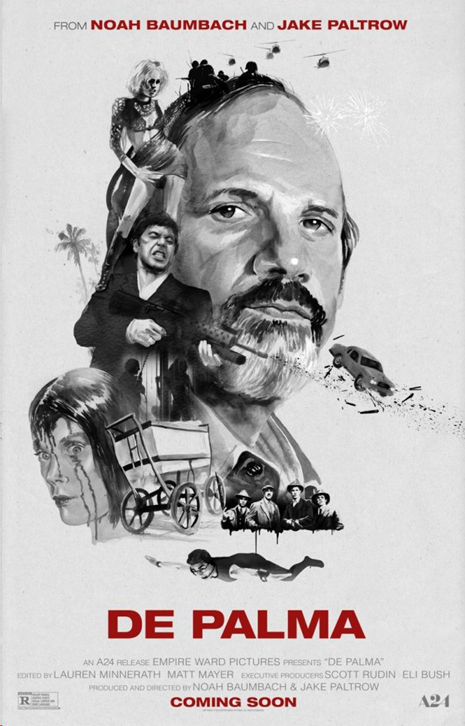 This new, second De Palma poster popped up today from A24. Meanwhile, in this week's issue of
This new, second De Palma poster popped up today from A24. Meanwhile, in this week's issue of 
